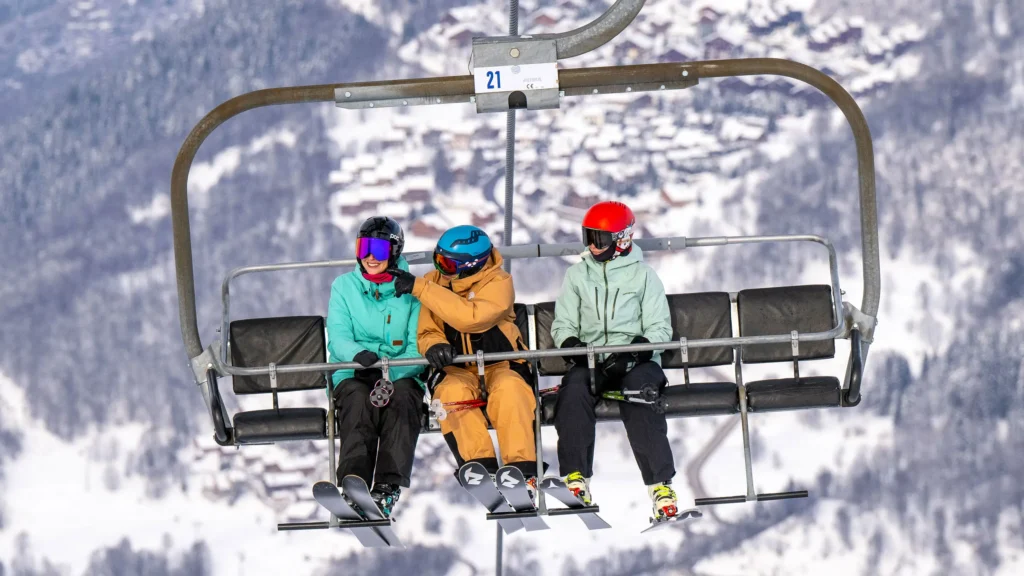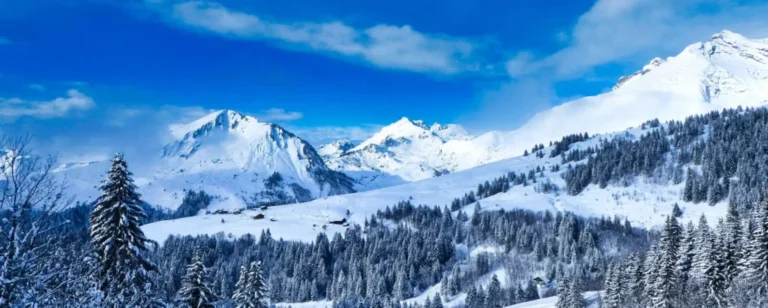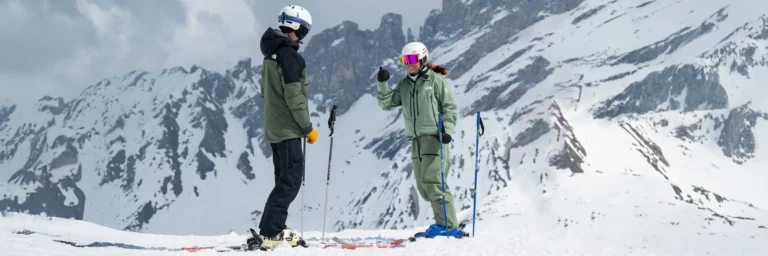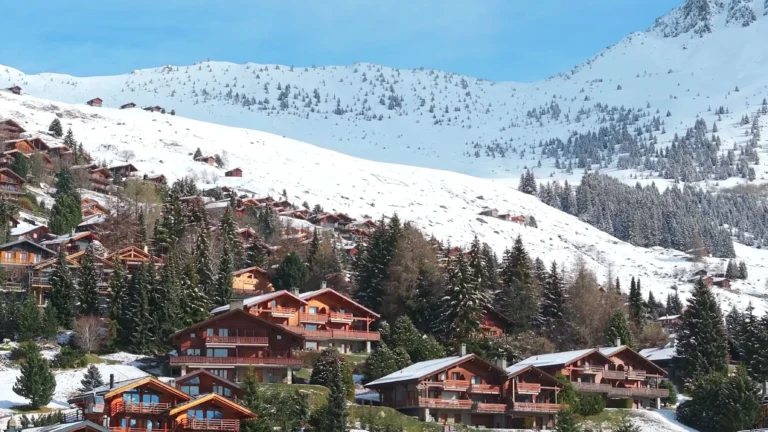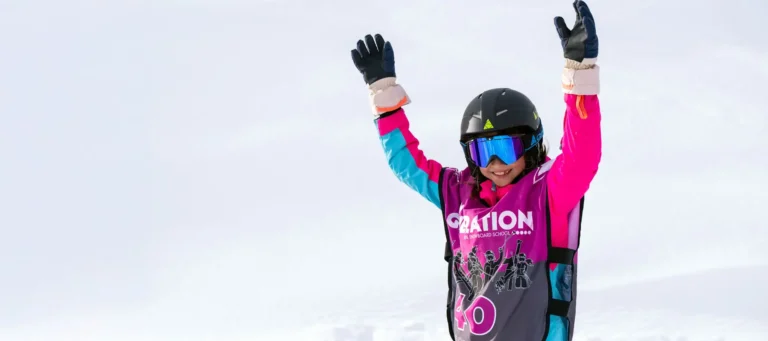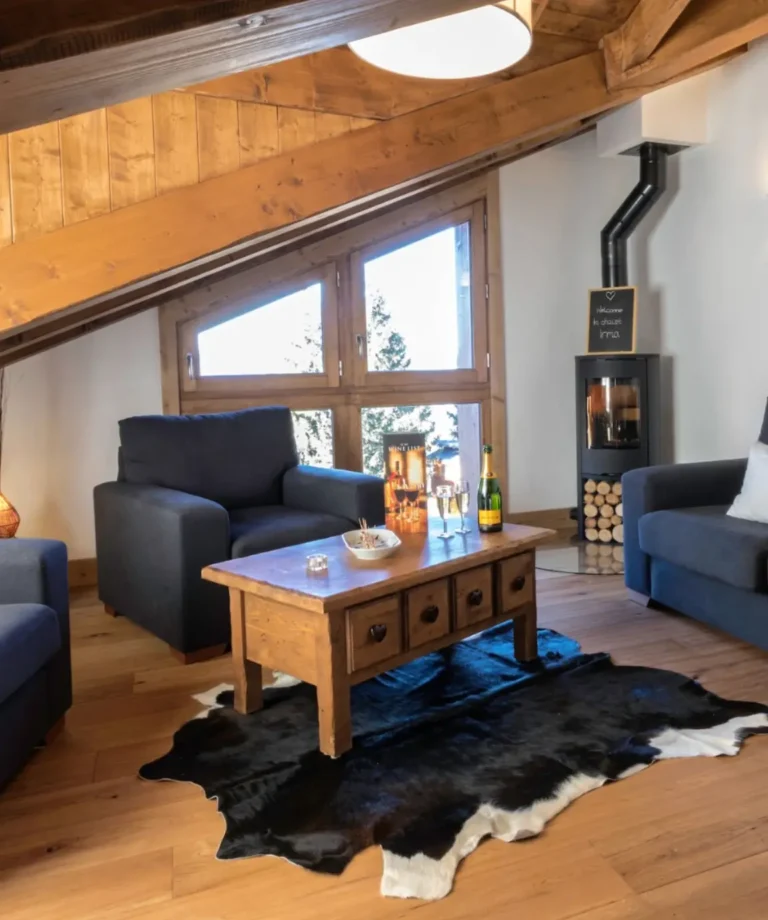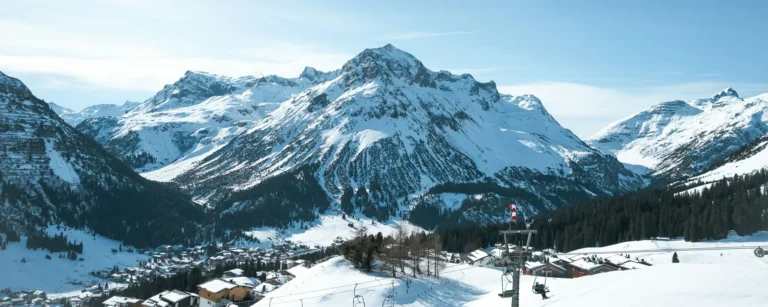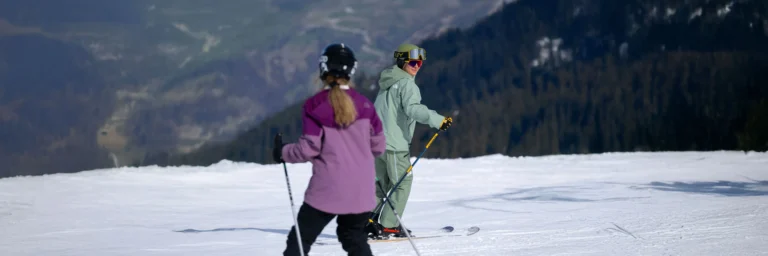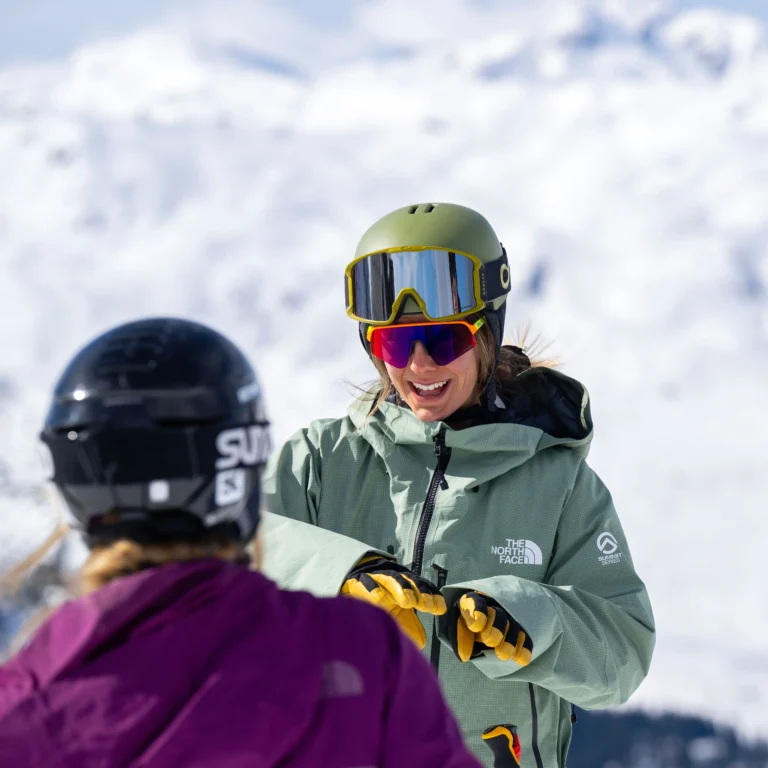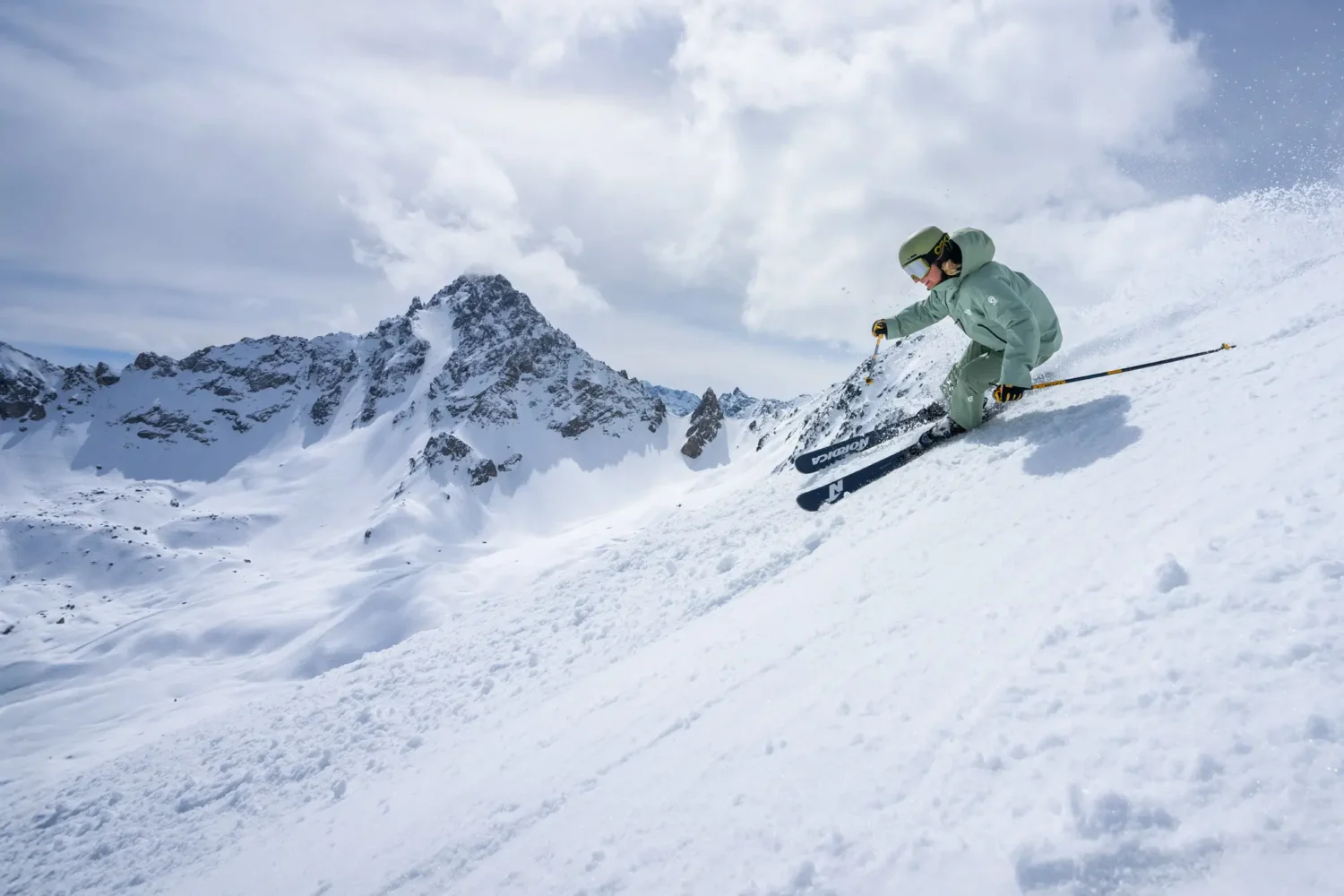This guide explores everything over-65 skiers should know to make the most of their time on the snow, from equipment to fitness tips and beyond.
Equipment Considerations

Keep an eye on your equipment
Letting go of tried and tested gear can be difficult, as it’s easy to think that if it’s not broken, why fix it? Only after trying new equipment will you see a massive jump in performance and usability.
All ski equipment has a life expectancy, not just in age but in mileage, too, with heavily used boots and skis often softening past their best. This doesn’t mean you’ve got to change all of your ski gear, but it’s a good idea to keep an eye on its condition.
If you need a second opinion on your gear, please ask an instructor or a trusted ski shop.
Top Tip: If you want new gear but can’t afford it all, prioritise your new boots. This’ll make the biggest difference in performance and comfort.
Boots
Boots are arguably your most important piece of equipment. A properly fitted boot will make a world of difference in terms of comfort and performance. If yours are causing discomfort, consider getting custom-fitted insoles or upgrading to a new pair more suited to your current needs.
We suggest investing in boot sole covers if you’ve got to walk anywhere in boots. These give you a better grip and reduce discomfort while walking around. They’ll minimise wear on your boots too.
Top Tip: Invest in fitted boots and try to avoid walking in them, especially without sole covers.
Area Considerations
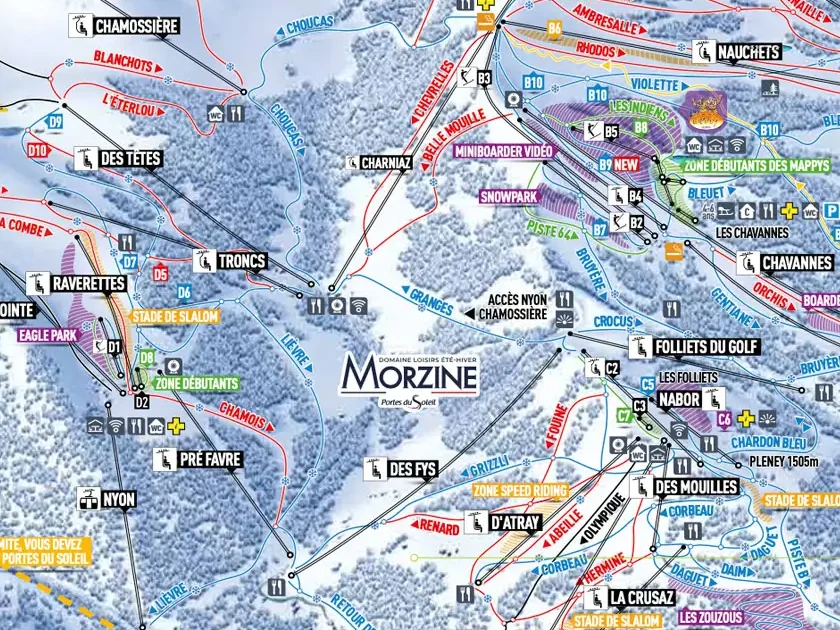
Avoid Funnel Areas and Busy Pistes
Crowded pistes can dampen your day. These are most common on pistes that act as an arterial route, fed by many smaller pistes.
If this is your only way back to the resort, head off well before the slopes close. The last run of the day is the one to avoid. It is typically busiest, and you’ll more likely encounter reckless skiers due to fatigue or alcohol.
There’s no shame in getting the gondola down. You may find many instructors doing the same thing. This way, you’ll be fit to ski the day after, and 99/100 times, the last run of the day back into town will be one to forget anyway.
Top Tip: Avoid busy funnel pistes on the last run of the day. It’s always best to set off earlier or take the lift down.
Watch Out for Flats and Bumps
Flat sections, bumps, and pitches can be challenging. Flat sections will likely require high physical exertion, while bumps can be harsh on the knees.
Check the resort maps ahead of time to pick routes suited to your comfort zone. If most slopes are bumpy during your visit, getting lessons can help massively. If knee mobility is particularly problematic, additional support through a Ski Mojo brace could be a great idea.
Top tip: Plan your route in advance and take private lessons to navigate bumps smoothly.
Weather Conditions
Severe weather can make skiing hazardous. Check the weather and piste conditions before heading out. If the elements aren’t in your favour, take a day off.
Flat light conditions may also be challenging, made worse by any eye conditions. There are ways to minimise the effect of flat light.
Rose or pale yellow lenses will enable you to see and reduce glare, which is common in whiteout conditions.
Alternatively, ski lower down the mountain on runs lined by trees. Trees will act to disperse any cloud, improving the range of vision.
If you find yourself caught out on an exposed area of the mountain, remember that orange tip piste markers are on the right side of the piste. Stay to the left of them.
Top tip: Orange or Rose lenses and tree-lined pistes will help you out massively. If this isn’t an option, then remember that Orange Tip Piste Markers are on the Right Side of the Piste.
Fitness Considerations

Warming Up and Stretching
Take 10 to 15 minutes to loosen your muscles with gentle dynamic stretches such as leg swings. This will increase your flexibility and get you mentally zoned in for a great day on the slopes. If you need guidance on how to warm up best, check out the Back on Track guide.
Top Tip: Never force a warm-up. Always start very gently and only slightly increase the tempo. Your body won’t thank you for getting woken up by a 110% effort warm-up.
Staying Hydrated
Dehydration can easily set in on warmer, non-stop ski days. This can be problematic, causing fatigue, cramps and lightheadedness. Bringing a bottle of water is brilliant if you’re skiing with a bag. Most places will happily refill it for free. If you don’t ski with a water bottle, ensure you get water when you stop.
Top Tip: Always ask for water at restaurants and cafes. It’s nearly always free.
Set the Right Pace
It’s tempting to power through a full day on the slopes, but pacing yourself is crucial. Stopping at slopeside cafes and restaurants is a key part of the ski experience. For shorter stops, picnic areas are great for a quick pitstop.
When stopping for a break, make sure to keep warm. Setting off when you’re cold will both hamper your performance and enjoyment. If you feel the cold creeping in, get moving or go for a hot drink.
Top Tip: Don’t let yourself get cold if you’re stopping. It’ll be much less enjoyable to get going again.
Other Considerations
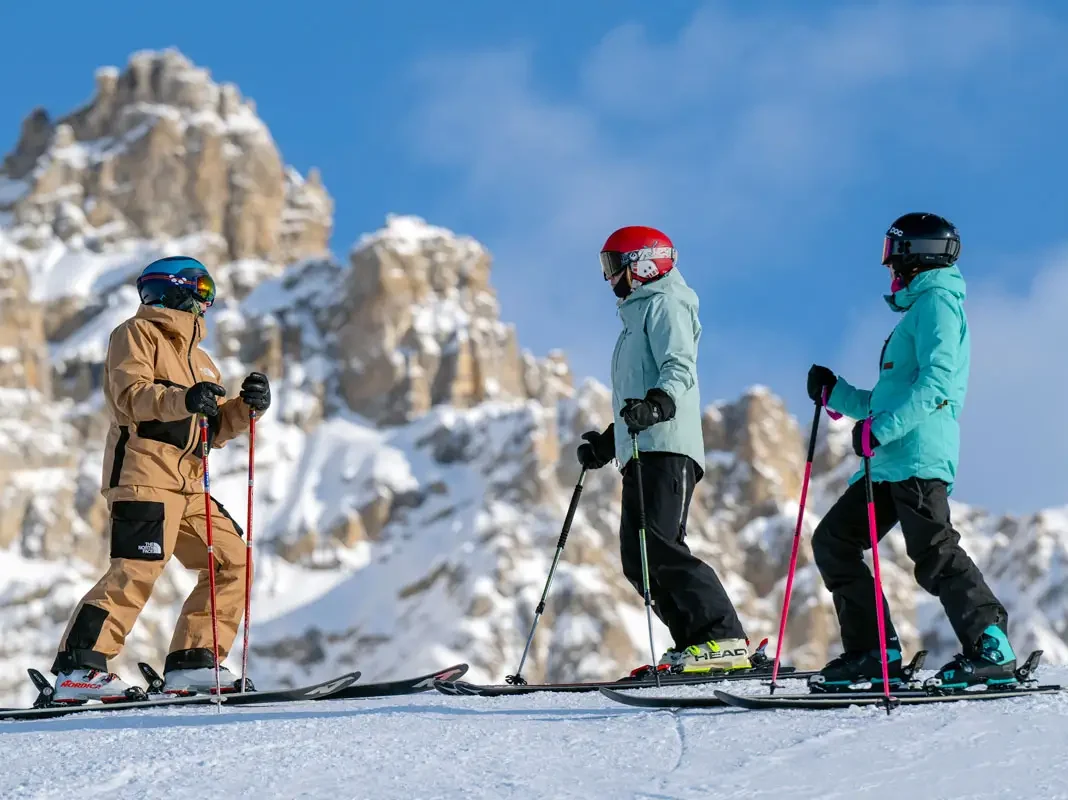
Ski with Company
Skiing is always better with company, be it family or friends. It is always much more fun, and you’ve each other’s backs if you encounter any obstacles on the slopes.
Top Tip: Always ski to the speed and ability of the weakest skier. It’s never a great idea to make anyone ski anything they aren’t comfortable with. Stronger skiers should also make sure to stop frequently.
Give the last run of the day a miss
The day’s last run is never usually worth it. By the end of the day, the light can get flat, the snow can become soft and bumpy, and the piste can be busy with other skiers. Add to this a day’s worth of ski fatigue, and you won’t have the recipe for an enjoyable run. Give the last run for the day a miss. You’ll be much safer doing so, and your legs will thank you.
Top Tip: Avoid skiing back during the last hour of the day. Staying up until the last lift? It’s best to take the gondola down.
It’s Never Too Late for Lessons
Refresher lessons are brilliant even for experienced skiers. You’re never past the point of learning regarding age or ability. Skiers competing in the Winter Olympics and the FIS Ski World Cup still have lessons. They spend more time having lessons than anyone else on the mountain. They just choose to call it coaching. In reality, it’s the same thing.
Top tip: Lessons will help you get the most out of skiing.
Get in touch to book a ski lesson. Our instructors can give you advice on techniques, tips on equipment, and fitness.
